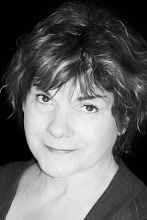Bali: Beyond the SnapshotAre you ready to grab your camera and spend a week on the magical island of Bali? For our photo adventure we will settle in the small village of Amed on the east coast. This is real life in rural Bali, tiny settlements of poor but happy people who live off the land and sea. Every activity that the Balinese people engage in is infused with artistic expression, so inspiration will surround us every moment of the day.
As a group we will have the opportunity to see and photograph verdant rice paddies, enchanted temples, bustling markets. There is also plenty to discover just a few steps from our villas. On one of my walks I observed a family going about their chores outside their bamboo hut. The smiling mother welcomed me in, excited to show off her tiny, windowless, dirt-floor kitchen. This kind of experience is our reward for staying off the beaten path.
The week is tailored to every level of expertise. We will have discussions on how to take better photos, and demonstrations of how to process the photos in Photoshop. There are group activities and plenty of opportunity to venture out on your own.
You'll return home knowing how to elevate your pictures to fine art status. Your portfolios - as well as your mind and your heart - will be filled with colorful impressions of this magnificent place.
To whet your appetite, here are a few of the places we'll see:
• The market at Amlapura is where the locals go for food and clothing. You can shop for exotic fruit, grains, sarong material, temple decorations, even fish heads. It's an intense experience for sure, and for those who can't stand the heat (literally) there is plenty of action on the street as well.
• Lush Tirtaganga Water Palace. Such a treasure trove of photo opportunities here, in addition to simply being a very refreshing place to spend some time. There is a tiny little village nearby also worthy of photographing.
• The Temple of A Thousand Steps. Because it is such a strenuous climb, we won't be negotiating the thousand steps, but the temple at it's base is beautiful. On a clear day, you can see across the valley to the commanding volcanoes hovering over the land.
• My personal favorite: On one evening, we'll be driven up a hill and then have a leisurely walk down. There are incredible views of rice terraces, more quaint settlements (look closely or you'll miss them!) and lots of curious villagers who are happy to pose.
Arcangelo Productions is hosting this workshop, and we will stay at their incomparable Apa Kabar villas. Although this information will not be posted to their website for another few weeks, you can contact them directly to register for the workshop and to take a peek at the villas. The cost of the workshop is $2750 and includes accommodations, food and the workshop fees. It does not cover the cost of your flight to Indonesia.
If you have any questions by all means ask me!
This was taken on the walk down the hill:

Just outside the gates of our villas I saw this fisherboy:

Rice paddies up the hill:
























